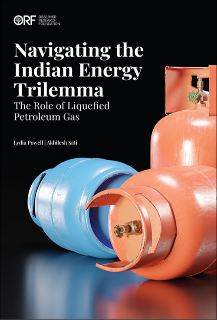 This piece is part of the series, Governance Propositions of 2022
This piece is part of the series, Governance Propositions of 2022
The years 2020 and 2021 saw quite a lot of relaxations in rules, regulations, and policy dispensations for corporate India. It saw policymakers and regulators lend a sympathetic ear to many requests and industry pushbacks. Having seen these relaxations, but yet to see the economic growth engine kick in, we have to rethink our missed targets due to any of these dispensations, especially if they are in the sphere of ESG (Environment, Social, and Governance). One such acid test will be due in the next three months, in the corporate governance space; hopefully, with no more cries for rule-relaxation. India, as a key global economic force and large consumer market, has to set its policy narratives to be in tune with global investor expectations. The year 2022 could see many of these concerns feature in the mainstream national agenda, and regulators’ ability to ‘stand their ground’ will have to be showcased.
Splitting of the CMD roles
India Inc. must work towards separating the roles of the Chairperson and Managing Director (MD) in right earnest to improve corporate governance. The securities market regulator—SEBI—has mandated that, from April 1 2022, the posts of Chairman and Managing Director (CMD) need to be split. This regulation is applicable to the top 500 listed entities by market capitalisation. The rule was originally meant to come into effect from mid-2020. However, based on industry representations, an additional time period of two years was given for compliance by SEBI (LODR) (Amendment) Regulations 2020, dated 10 January 2020. According to the SEBI Chairman’s public statement on this subject, the “separation of the roles will reduce excessive concentration of authority in a single individual.”
India, as a key global economic force and large consumer market, has to set its policy narratives to be in tune with global investor expectations.
Family businesses rank top
It is noteworthy to observe that 300 of the top 500 companies in India are family businesses. One of the arguments of the industry has been that these promoter-executives have built the businesses from the ground-up and have their wealth concentrated in those entities. Family businesses also need to sharply address concerns about weak governance, ranging from issues like related party transactions, and actively instituting diversity initiatives and whistle-blower policies. In addition, the governance style has to reflect the current modern capital market’s needs. Meeting and exceeding those standards and communicating them well gets to “premium” valuation stage, else trying to use ‘legacy’ as a calling-card won’t evoke any response.
Over the past few years, India Inc. has been waking up to a slew of regulations aimed at strengthening corporate governance aspects, including related-party transactions. The splitting of the posts is a critical push in nudging the reluctant.
Unbridled power of a combined CMD post
When a person occupies both the posts, they are the virtual power centre. That one person decides everything or can delay almost anything by virtue of their role. The chairperson, who is a non-executive unless otherwise specified, will have absolute command over the board agenda items and will command the proceedings of the board meetings, including the power to adjourn the meeting, if necessary. In board matters, they not only decide the agenda items but also answer all the questions and issues arising thereon. The MD, in this context, will be ‘reporting’ to the Board, of which the chairperson is the presiding head. Most Articles of Association (AoA) allow the chairperson to have the casting vote in case of any deadlock; if the CMD role is combined, that individual has two votes in a deadlock.
Meeting and exceeding those standards and communicating them well gets to “premium” valuation stage, else trying to use ‘legacy’ as a calling-card won’t evoke any response.
Many of the Board discussions are routine business and compliance-related discussions. The true test of governance standards come into play when discussions and decisions around the following come up: Appointment of key managerial personnel (KMPs), related party transactions, diversification plans for newer lines of business or totally unrelated product lines. A good outcome needs a robust process of healthy debate in the board meeting, and should be preceded by any specific sub-committee of the board for a related topic. For instance, the Nomination and Remuneration Committee of the Board discusses the KMP appointments. A good practice is that the MD, who is a full-time chief executive, briefs the Board members on the process, merits, and risk factors and makes a recommendation. It would then be practical for the Board to discuss it with data points and make a logical decision. Even if there are any differences of opinions on the topic, it would be a useful exercise to table all points of view in the Board discussions.
Alternatively, if the Board has a ‘rubber-stamp’ chairperson (basically brought in by the MD), then the splitting of the roles of chairperson and MD is meaningless. Smart-alec companies may attempt to side-step the regulation by appointing an executive vice-chairperson or appointing a family member who is not considered a relative under the Companies Act 2013 as chairperson. That would defeat the very spirit of the regulation. Only a chairperson who has the moral compass and the gravitas to stand up to a powerful MD will make this regulation useful.
Long-term capital
With strong governance standards, corporate India can hope to gain better capital flow and to also get investors’ support—both in capital markets as well as private investments. However, it would be interesting to see if the family enterprises, which are dominant in India, can preserve their speed of decision-making in the growth of the business, while balancing the governance aspects around roles and responsibilities between family members in the business as well as non-family professional leaders.
Smart-alec companies may attempt to side-step the regulation by appointing an executive vice-chairperson or appointing a family member who is not considered a relative under the Companies Act 2013 as chairperson.
This jump-shift has justifiably prompted much soul-searching in many of India’s traditional family-owned and managed businesses, who have had a generation or two of presence in the Indian market. Many research studies continue showing that in a family business, the family firm’s ability to take long-term bets are higher than that of institutionally held firms. Much of its ability to grow the business or pivot the business-lines to be relevant rests with their ability to bring in non-family C-suites as well as independent directors on its boards. The ability of business owners to separate their role of being chief executive from the stewardship role that they are expected to play as “promoter-shareholder” is crucial.
Only time will tell if India Inc. has the ability to make this new regulation meaningful, without defeating it by ‘puppetry in the board room’.
The views expressed above belong to the author(s). ORF research and analyses now available on Telegram! Click here to access our curated content — blogs, longforms and interviews.



 This piece is part of the series,
This piece is part of the series,  PREV
PREV

